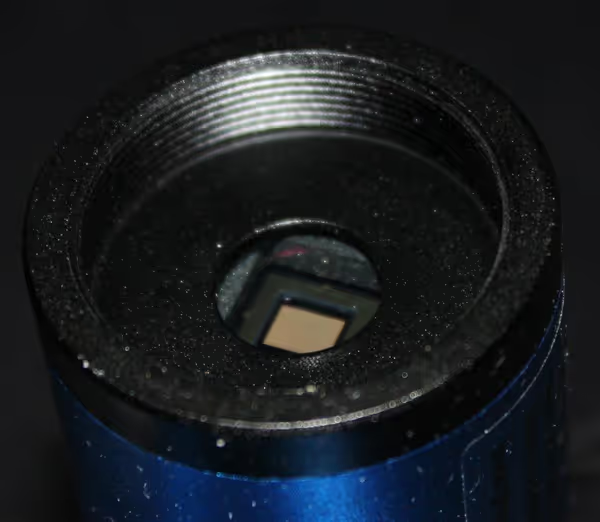Cheap guider and color planetary camera - QHY5R-II
QHY5R-II is one of recently released QHY cameras -a $99 cheap color guide and planetary camera. Lets take a quick look at it capabilities.
QHY lists the camera at $99, while in Europe Modernastronomy for example offers it for 99 GBP. Aliexpress offers it at a lower price, but that shipping from China. The camera uses USB2, it has ST4 guide port, the housing is 1,25" in diameter so fits any 1,25" eyepiece holders. On the front we get C/CS mount which allows also using CS and C-mount lenses. 1,25" housing also makes it easier to focus in finder-guidescopes.


The camera is based on On Semi ASX340 sensor designed for cheap CCTV cameras and surveillance. It has a small diameter of 1/4", 728x560 frame with big 5.6um pixels. QE reaches around 60% and the camera can record up to 95 FPS. The cover glass is also a IR/UV cut filter (680nm IR cut). The set includes also USB2 and ST4 cables.

The camera is supported by QHY ezPlanetary, which is good for planetary imaging. Aside of standard features it also includes some auto color balance options. As of writing this article the V0129 ASCOM driver barely works - it seems to work finally with PHD2, but Nebulosity4 most of the times returns a black frame with no image. The vendor is working on fixes. SharpCap supports it currently via one of WDM options, while FireCapture hangs - next beta should have newer QHY SDK with fixes...

In case of C-mount lenses I needed a spacer to make it focus. My 4 mm one is to short to place the lens in perfect position. My cheap CS lens also seems to need a short spacer, shorter than 4mm.

I don't have any astrophotos taken with it, but looking at daytime images the image quality seems as good if not better than with MS Lifecam Studio - it seems to have less grainy noise than that webcam. The fixed pattern noise is also rather close to non-existent. It seems like this low cost sensor is actually very good. Don't expect however that it will rock in planetary imaging. It costs little so don't expect to much just to be on the safe side when placing any orders.
Below are two darks and a flat. The second one was taken at bit higher offset so it cut out some noise:



QHY5R-II looks quite interesting - at the moment it's the cheapest guider with quite good sensor which also should offer good entry level quality in planetary imaging. The current drawback are the drivers.
Note that in the upcoming years on northern hemisphere planets will be low or very low. Color camera without an atmospheric dispersion won't give a clear and sharp image due to atmospheric dispersion shifting the wavelengths. In some cases sacrificing color balance with for example a yellow filter can help - but keep in mind that even good color cameras will fail on low altitude if not corrected for dispersion.
Comment article